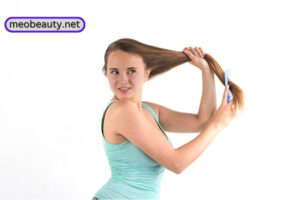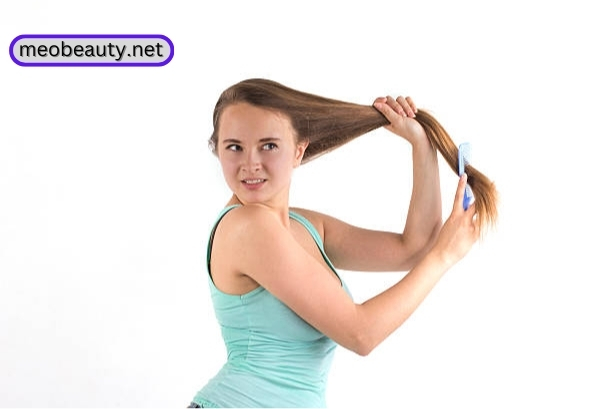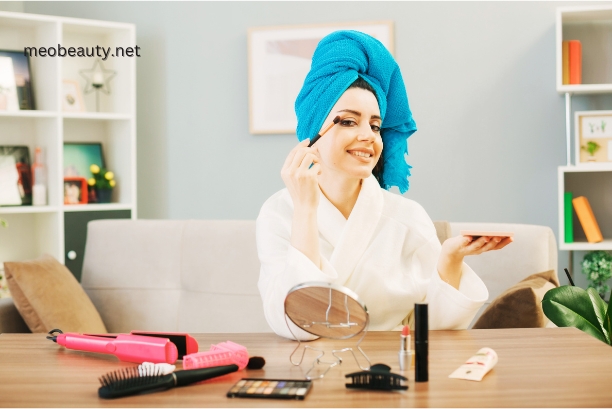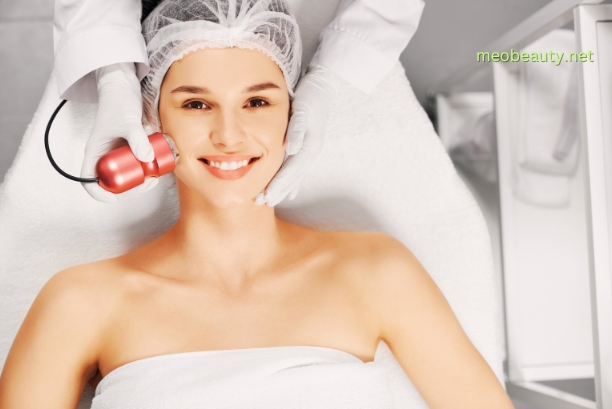Yes, can I do hair treatment after rebonding, but it’s advisable to wait at least two weeks. Opt for treatments designed for chemically treated hair to ensure compatibility and prevent damage.
Navigating the world of hair care post-rebonding can be tricky, yet it’s crucial for maintaining your hair’s health and shine. After the intense chemical process of rebonding, your locks need time to recover before undergoing additional treatments. Choosing the right moment for your next hair treatment is essential; at least 14 days is recommended before applying further chemicals to your hair.
This pause allows your strands to settle into their new structure and regain strength. When selecting a hair treatment post-rebonding, focusing on nourishing and hydrating options can aid in the restoration of your hair’s vitality. Please make sure these treatments are specifically formulated for chemically straightened hair to enhance the rebonding results and maintain the integrity of your hair.

Hair Rebonding Basics
Hair rebonding transforms curly or wavy hair into smooth and straight strands. It’s a popular treatment for those seeking a sleek look. The process involves using chemicals that break natural bonds in the hair. Once broken, these bonds can be rearranged to give your hair a new structure.
Chemical Process ExplainedChemical Process Explained
The chemical process of rebonding is intricate. It starts with applying a relaxant to the hair. This relaxant breaks down the bonds that give hair its natural shape. After the hair bonds break, a hairstylist uses a flat iron to straighten the hair. Finally, a neutralizer gets applied to re-bond the structure, resulting in straight hair.
Immediate AftercareImmediate Aftercare
Proper aftercare is crucial after a rebonding treatment. Keep your hair dry and straight for at least 48 hours. Avoid tucking your hair behind the ears or tying it up to prevent kinks. Use shampoo and conditioner that’s specific for chemically treated hair to nourish and protect your newly rebonded hair.
| Do’s | Don’ts |
|---|---|
|
|
Types Of Hair Treatments Post-rebonding
After rebonding, your hair requires extra care to stay healthy. Choosing the right post-rebonding treatments is critical to maintain your hair’s vibrancy and strength. Dive into the various hair treatments you can indulge in after a rebonding session.
Conditioning Treatments
Conditioning treatments are essential for rebonded hair. They help to hydrate and nourish your locks, ensuring they remain smooth and silky. These treatments penetrate deep into the hair shaft to repair any damage caused by the rebonding process.
- Deep Conditioning Masks: Use once a week to restore moisture.
- Leave-in Conditioners: Provide all-day protection and shine.
- Oil-based Treatments: Natural oils can offer intense hydration.
Protein Infusions
Protein infusions are a lifesaver for maintaining the structural integrity of your hair. Rebonding can weaken your strands, but protein treatments help to rebuild and strengthen them from within.
| Type of Protein Treatment | Benefits |
|---|---|
| Keratin Treatments | Adds smoothness and tames frizz. |
| Collagen Infusions | Boosts elasticity and shine. |
| Silk Protein Serums | Enhances strength and glossiness. |
Book a monthly professional protein treatment. At home, use protein-enriched products for daily maintenance.
Timing Your Treatments
Wondering about the right time to treat your locks after rebonding? Timing your treatments is crucial to maintain hair health. Patience is key! The wait before treating rebonded hair can make all the difference.
Optimal Waiting Period
After rebonding, your strands need time to settle. Experts recommend waiting at least four weeks before undergoing any hair treatment. This period allows the bonds to stabilize, ensuring your hair is strong enough to handle further care.
- Four weeks for minor treatments like deep conditioning or hot oil sessions.
- At least six weeks for color services to prevent damage.
Signs Your Hair Is Ready
Watch for signs to know if it’s safe to treat your hair post-rebonding.
- No visible damage: Check for breakage, or dry ends.
- Feels resilient: Your hair should feel elastic and strong.
- Normal moisture balance: Neither too dry nor too oily.
If these signs align, gear up for the next step in hair pampering.

Credit: www.youtube.com
Potential Risks And Considerations
Welcome to the world of hair care, where looks transform, but not without a measure of caution! Post-rebonding, treating your hair might tempt you, but pause and learn about the potential risks and considerations. It’s critical to navigate these waters carefully to ensure your hair remains healthy and vibrant.
Overprocessing Concerns
Rebonding is a chemical process that alters your hair’s structure. Think of your hair like a delicate fiber. Applying another treatment too soon can overwhelm it. Overprocessed hair becomes weak. This leads to breakage and loss of natural luster.
- Wait before further treatment: Experts typically advise waiting at least six months.
- Signs of stress: Be on the lookout for dryness and brittleness.
- Healthy practices: Minimize heat styling. Use deep conditioning masks regularly.
Choosing The Right Products
Selecting the right post-rebonding treatments is crucial. Not all products will play nice with your newly straightened locks. Let’s focus on what to look for:
| Ingredient | Benefit | Consideration |
|---|---|---|
| Keratin | Strengthens | Suitable for rebonded hair |
| Sulfate-free | Gentle cleaning | Prevents dryness |
| Natural oils | Moisturizes | Look for argan or coconut oil |
Product choice: Use products designed for chemically treated hair. Professional consultation: A stylist can suggest the perfect product. Ingredient check: Always read labels for harsh chemicals to avoid.
Maintaining Healthy Rebounded Hair
Shiny, straight hair post-rebonding treatment can turn heads, but daily routines and long-term care are crucial in maintaining that sleek look. Ensuring hair stays healthy and gorgeous requires consistent attention. We’ve got some essential tips and strategies to keep those locks in tip-top shape.
Daily Care Tips
- Use a gentle shampoo. Wash every other day to prevent dryness.
- Apply a conditioner daily. It keeps hair hydrated and shiny.
- Avoid hot water. Lukewarm is best to protect hair bonds.
- Pat hair dry. Rubbing causes friction and damage.
- Choose wide-tooth combs. They prevent breakage during detangling.
- Minimize heat styling. High temperatures can cause stress to rebonded hair.
- Use a protective serum before styling. It acts as a barrier against heat.
Long-term Hair Health Strategies
- Get regular trims. They keep ends healthy and prevent splitting.
- Schedule deep conditioning treatments every two weeks. This retains moisture.
- Incorporate a protein treatment once a month. It strengthens hair strands.
- Avoid harsh chemicals. Opt for natural or less abrasive products whenever possible.
- Protect hair from the sun’s UV rays. A hat or UV protectant keeps hair safe.
- Stay hydrated. Drink plenty of water. It nourishes hair from within.
- Eat a balanced diet. Protein, iron, and vitamins support hair health.
Professional Input
Hair treatments after rebonding can leave many apprehensive. Seeking a professional’s advice is crucial. Stylists bring expertise to protect your hair’s new structure. They ensure treatments align with your hair’s needs post-rebonding.
Consultation With A Stylist
Before deciding on any hair treatment post-rebonding, consult a seasoned stylist. Professionals assess your hair’s condition, providing personalized advice. They consider hair texture, rebonding chemicals used, and your hair’s overall health. This step is imperative to avoid damage and maintain your hair’s integrity.
Tailored Hair Care Regimen
A tailored hair care regimen is vital after rebonding. A stylist can recommend the best products and treatments. They customize a plan that includes:
- Nourishing hair masks to revitalize your locks.
- Moisturizing conditioners for hydration.
- Heat protectants when styling.
This plan focuses on restoring moisture and strength. It aims to preserve your hair’s smooth, sleek appearance.

Credit: www.pinterest.com
Frequently Asked Questions On Can I Do Hair Treatment After Rebonding
What Hair Treatment Is Best For Rebonded Hair?
For rebonded hair, use a deep conditioning treatment enriched with proteins and moisturizers. Regular use helps maintain smoothness and shine.
How Do I Manage My Hair After Rebonding?
Avoid washing your hair for at least three days after rebonding. Use a mild shampoo and conditioner designed for straightened hair. Keep hair dry and refrain from tying it up to maintain its shape. Apply a serum or hair mask weekly to nourish and protect.
Minimize heat styling to prevent damage.
How To Do Conditioner Treatment After Rebonding?
Wait 48 hours post-rebonding before your first wash. Apply a sulfate-free conditioner to damp hair, concentrating on ends. Leave it on for 3-5 minutes. Rinse with cool water to seal cuticles. Use a deep conditioning treatment weekly to maintain moisture and hair health.
Can I Use Hair Serum After Rebonding?
Yes, you can use hair serum after rebonding to nourish your hair. Choose a serum designed for chemically treated hair to maintain smoothness and add shine.
Conclusion
To sum up, after rebonding, hair treatment can be beneficial if done properly and at the right time. Waiting a few weeks allows your locks to adjust and restores strength before applying treatments. Always consult a professional to ensure the best care for your newly straightened hair.
Embrace your fabulous mane confidently.









Leave a Reply